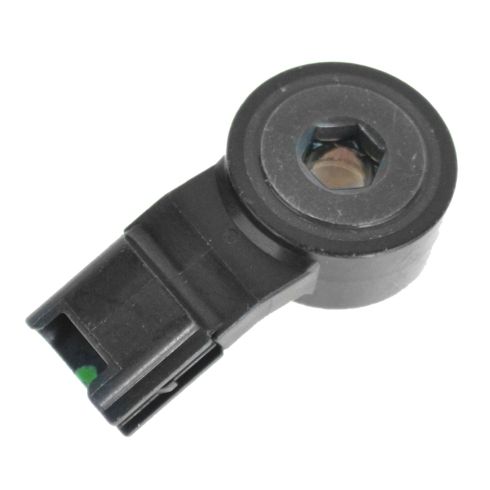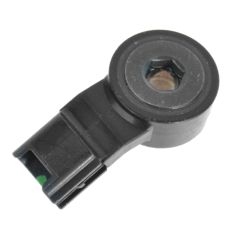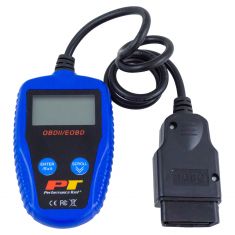1AEKS00032-Engine Knock Sensor TRQ ESA94884
Replaces
2017 Lexus LX570 Engine Knock Sensor TRQ ESA94884
Frequently bought together
Product Reviews
Loading reviews
4.68/ 5.0
22
22 reviews
January 23, 2017
The product arrived quickly, works, and is the correct part. Can't do any better than that:)
Bad knock sensor
June 20, 2017
The knock sensor you sent me was no good.but my funds was returned right away .i had to purchase one from the toyota dealer for two hundred dollars because i meeded it right away but i will try your company in the future
Knock sensor
November 11, 2017
Very good prices and service, I would high recommend
Quality part at fraction of the price
January 17, 2018
The part arrived on time & identical to the one we bought from the auto parts store. EXCEPT 1A-Auto part cost more than 80% less! SERIOUSLY! Identical part! No question that 1A-auto is where I'm getting my auto parts from now on!!!
Perfect part
March 16, 2018
Price beat out all others and delivery was prompt.
I will be a return customer.
-Ken
Knock sensor
April 13, 2018
Fit and worked perfectly no lights anymore all good
April 27, 2018
I received the sensor in good time and got it installed for a lot less than most parts stores ask for it. well pleased
Wow! Unbelievable! These guys are GREAT!
June 6, 2018
Took my 2005 Toyota Sienna through emissions and it failed due the engine light being on. I knew the (2) knock sensors needed to. E replaced. After pricing the (2) knock sensors at Pep Boys ($171 per each sensor), Auto Zone ($165/each) and Advanced Auto ($166/each), I decided to go online and see what the prices were like. 1A-Auto, as usual, was my first site to check. Found the sensors and was blown away by the price!!! $50 for two!!! Ordered the parts and received them in 5 days.
Sometimes it is convenient to go to the local auto parts place and pay a little bit extra to have right it then and there, but 1A Auto is my goto place to save money and get the parts quick, especially for my '05 Sienna.
Kudos to the staff.
June 18, 2018
The best service I ever have hoping to have business with you guys
Knock sensor 2008 scion xb
October 7, 2018
Good part fast delivery i got it just in time was here to replace my old one
Great price fast shipping
February 6, 2019
Got my part fast and easy. Price was great as well.
Fast delivery
September 12, 2019
Got here ahead of time and seems to be working just fine.Can't believe the brick and mortar stores charge over $130 for this same part.
Knock Sensor for Toyota Camry
September 14, 2019
Id definitely recommend this website to anyone who is looking to save more and still receive oem quality parts.
April 10, 2020
Good
Knock sensor
March 20, 2021
good service fast shipping product works fine no problems would recommend
GREAT PRICE!!!!
August 7, 2021
Price was Great,so much cheaper I was a little concerned of guality, but product seems to be working,customer service A1,Will be return customer.
October 23, 2021
Price is good and works well
January 30, 2022
Exactly as described
The best parts
September 7, 2023
1A Auto is more than the best. They have great customer service and the parts are high quality. I shall continue purchasing from them
100 thumbs up to you guys at 1A ??????????
Save a bundle doing it myself
September 10, 2023
Fit perfectly and works like a charm.
Knock sensor works
September 25, 2023
Seems to be working great. Good price, hopefully it lasts like the original.
No long gevity
October 8, 2023
Sensors did not last, went bad after 3 yrs 8000 miles of driving
Customer Q&A
How many knock sencers dose the 2004 ES 330 Lexus 3.3 take?
April 12, 2019
10
We do not have the specifications for every vehicle, so we suggest checking with Lexus in regards to your vehicle's specifications.
April 12, 2019
Peter L
Does it come with the bolt?
August 30, 2020
10
No. The sensor comes as pictured. No bolt.
August 31, 2020
K O
10
The hardware is not included.
August 31, 2020
Corey M
with this fit my 2005 toyota matrix xrs 2zz ge engine?
August 19, 2021
10
Im not sure . It do fit my 2010 Lexus RX350
August 20, 2021
Shawnakay P
10
This will fit the 2005 Toyota Matrix if it has a 1.8L engine.
August 20, 2021
Andra M
10
I dont know. Mine was a 2003 .
August 24, 2021
T R
will this sensor fit a v6 tacoma 2012?
September 8, 2023
10
Yes, it fit my 07 fj cruiser, same motor. Get new intake gaskets before you start. It's not as hard as it seems at first. It will save you a bundle. And you don't have to remove the head like they want you to believe. Find the videos on you tube that do not remove the head.
September 10, 2023
Ralph R
10
Yes, this part will fit your vehicle.
September 11, 2023
Emma F
Lexus is a registered trademark of Toyota Motor Corporation. 1A Auto is not affiliated with or sponsored by Lexus or Toyota Motor Corporation.
See all trademarks.














